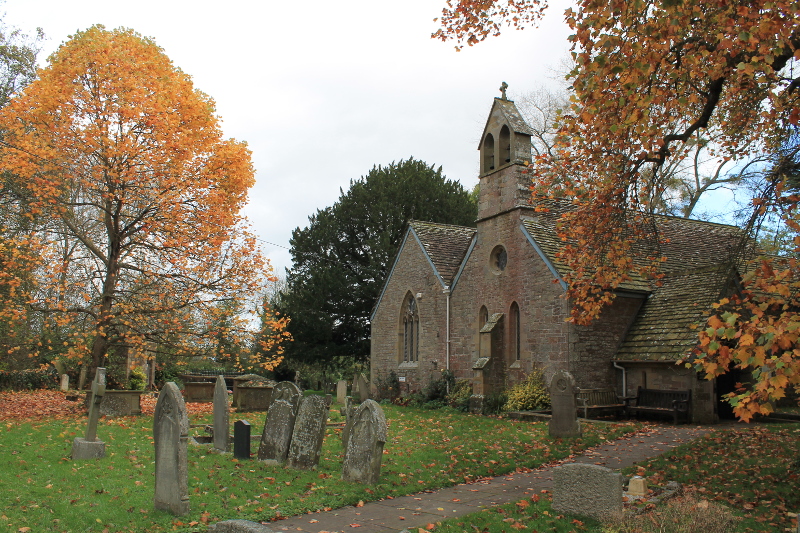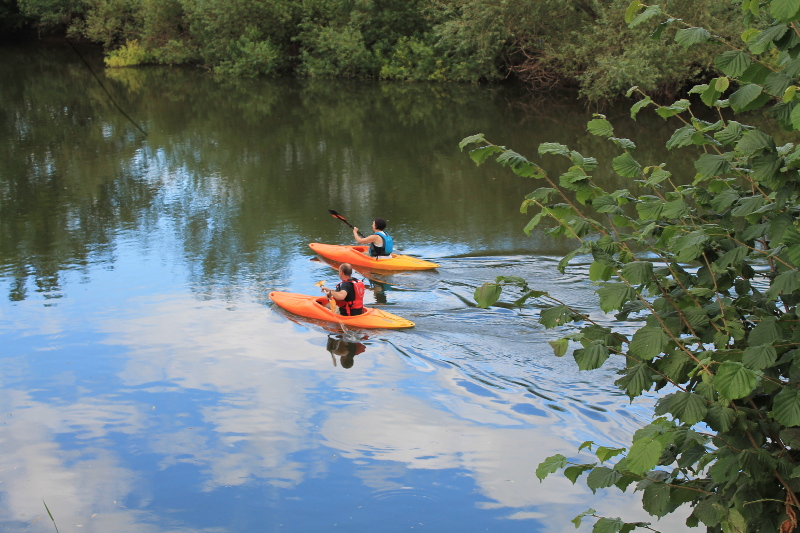Whitchurch and Ganarew Neighbourhood Plan

Saint Dubricius Church
Whitchurch
The village of Whitchurch in South Herefordshire straddles the A40 trunk road between Monmouth and Ross-on-Wye. The parish also contains the settlements of Symonds Yat West, Great Doward, Crocker’s Ash and Lewstone.
Prior to the 9th Century this area was within the Welsh kingdom of Ergyng. Then it was taken over by the kingdom of Mercia. After the Norman Conquest the area became known as Archenfield and was governed as part of the Welsh Marches. It became part of Herefordshire and England in the 16th Century, although the use of Welsh in the area remained strong until the 19th Century. The Welsh name for the village of Whitchurch is LLandywynnog. Within the village is the Old Court Hotel which was the ancestral home of the Gwillim family and was lived in for a while by John Graves Simcoe, first Lieutenant Governor of Upper Canada (1791 – 1796) and founder of Toronto.
Symonds Yat is a village in the Wye Valley and its name is said to be derived from Robert Symonds, a 17th Century Sheriff of Herefordshire and “Yat”, an old word for a gate or pass.
The history of human activity in this part of the Wye Valley and the hills of the Doward can be traced back for 12,000 years. Before that, archeologists have uncovered bones from hyenas, sabre-toothed cats and a mammouth in caves around the valley, notably in King Arthur’s cave and Merlin's cave.
Iron Age hill forts on the Doward and at Symonds Yat Rock provided defensible settlements for the local inhabitants. During Roman times these forts became focal points in the region and the importance of iron ore here and in the Forest of Dean made this a valuable prize for the conquerors. In the 8th Century Offa’s Dyke was built to separate England from Wales.
The Yat Gorge was mined for iron ore and the remains of a smelting works can be found near the Symonds Yat Rapids. The iron works here date from the 1590s and were operated by the White family until 1753 when they were leased to John Partridge, an ironmonger from Ross-on-Wye. He combined this ironworks at New Weir with his forge at Lydbrook, which smelted pig iron from his furnace at Bishopwood, upstream from Symonds Yat. The works closed when the lease ran out in 1798 and the adjacent weir and lock buildings were demolished and the lock filled in, in 1814. In 2009 Herefordshire Archeology excavated the New Weir Iron Works to establish how the iron works functioned between the start of smelting and its decline in the 1800s. It was found that the works included a “slitting mill” for making wire nails and a rolling mill, powered by water wheels. The site of the iron works have now been cleared of scrub and the remains preserved.
The River Wye has carved out a deep gorge through the dolomitic limestone of the area, creating spectacular scenery such that the area has been designated as an Area of Outstanding Natural Beauty (AONB).

Canoeing on the Wye at Whitchurch
Tourism in the area has been important for over 200 years and has had a significant impact on our Group Parish. In earlier times the river was a significant method of communication for farming, commercial and industrial traffic. Today, most river traffic is associated with tourist activity. Originally between Ross-on-Wye and Monmouth there were several hand ferries employed to transport people and livestock across the river at various locations. Now, within the parish there are two remaining hand ferries where the ferries are pulled across the river by a ferryman standing in a boat and pulling on a cable which is secured from both river banks. These operate from the “Saracen’s Head Inn” in Symonds Yat East and from “Ye Olde Ferrie Inn” in Symonds Yat West.
In addition to more recent attractions such as the Leisure Park, the Hedge Puzzle and the Butterfly Zoo at Symonds Yat West, hotels and pubs such as the Old Court Hotel, The Paddocks Hotel, the Crown, the Wye Knot and Ye Olde Ferrie Inn provide accommodation, food and drink. There are also many holiday letting properties throughout the parish. River boats also operate and several canoe hire companies are based in the parish.
Many activity pastimes are catered for in the area, including mountain biking, canoeing, abseiling, dogging, rock climbing, caving and orienteering.
Services and facilities exist in the parish; “Woods of Whitchurch” provides a village store and post office facilities and the Daf y Nant service station and the Murco service station either side of the A40 provide service station, Spar shopping and café facilities. In addition there is a garage and MOT testing station at Whitchurch and a diner and car wash facility on the northbound side of the A40.
Whitchurch C.E. (V.A.) Primary School provides pre-school and primary school education and has an ”Outstanding” rating by ofsted (2012). Click on the button below to see more information.
Whitchurch Memorial Hall provides a venue for community activities. Click on the button below to see more information.
Local industrial and commercial businesses are located at 3 industrial estates throughout the parish and there is a steel fabrication company at the north end of the parish, adjacent to a VW garage and a motor caravan centre. The business activity is vibrant throughout the parish, in total more than 150 businesses are located here.
St Dubricius Church at Symonds Yat West in the Deanery of Ross and Archenfield; its foundations date from the 9th century and the oldest part goes back to the 13th century. Click on the button below to see more information.

